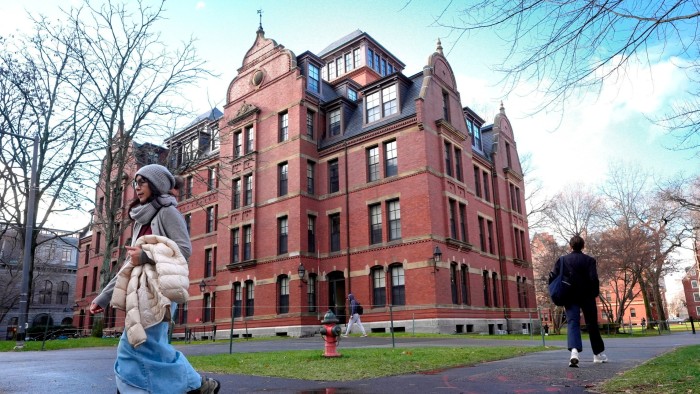Stay informed with free updates
Simply sign up to the Private equity myFT Digest — delivered directly to your inbox.
US college endowments are struggling to sell stakes in ageing private equity funds, hampering their ability to fund new investments, as the university sector comes under pressure from federal funding cuts.
At least four US universities — including Harvard and Yale — have either recently completed or are actively exploring discounted secondary market sales of private equity stakes held by their endowment funds to meet capital calls, according to public disclosures and interviews conducted by the Financial Times.
Pressure to raise cash from older investments comes as private equity distributions as a percentage of net asset value have fallen from an average of 29 per cent in the period from 2014 to 2017 to only 11 per cent last year, according to Bain & Company’s latest global private equity report.
Endowment funds are also rushing to complete sales in the current financial year ahead of potential changes to investment taxes, which could rise from 1.4 per cent to 21 per cent for the richest universities if proposals tabled by Republicans last week become law.
“We are very worried about the whole endowment tax issue combined with the federal funding cuts,” said the head of private equity at a major university endowment with more than $10bn in assets. “We have put some [private equity] assets on the secondary market, but the response has been muted . . . everyone knows that it’s us on the other side of it.”
One endowment fund manager said discounts for private equity secondary sales had grown in recent months as investors sought liquidity.
“We recently looked at [one] portfolio at 80 to 85 cents on the dollar,” he said. “There’s always going to be a discount, and the question really is, what price are you willing to move on from those assets and reinvest in something else.”
The $41bn Yale endowment fund has been trying to sell some of its venture and growth investments, using stakes in top buyout funds with strong records as sweeteners, to get deals done ahead of the end of its financial year on June 30, according to people familiar with the fund’s investments. They added that the fund had received very few bids for the whole portfolio.
A person close to Harvard Management Company, which oversees $53bn of assets, said the endowment was exploring the sale of roughly $1bn in private equity stakes to “ensure it has the appropriate level of cash available to meet whatever capital calls or new commitments that may come in the future”. Harvard is a regular user of secondary markets and in recent years has used the market to offload ageing funds as discounts narrowed.
Harvard declined to comment. Yale did not respond to requests for comment.
An adviser to large endowment funds said they were reluctant to sell assets at heavy discounts because they have other ways of raising money, such as issuing debt, adding “my gut is that they won’t sell that much”.
Harvard has already issued $1.2bn of bonds this year, compared with under $1.5bn in 2024 and $708mn in 2022.

The chief investment officer at another large university endowment said it had increased its cash allocation from 3 per cent to 5 per cent in recent months. “We want to hoard cash because I might be called upon by the administration or the board,” he said.
He added that he was considering selling private equity stakes on the secondary market because they were not going to generate much cash.
The chief investment officer of a mid-sized university endowment that has completed secondary sales in recent weeks said these would continue “in a controlled way” in the coming months to meet capital calls, worth up to 4 per cent of the fund’s assets.
“We want realisations to increase and distributions to increase,” he said. “That’s the only real long-term solution.”
US President Donald Trump has cut billions of dollars of federal funding to universities. Some have been specifically targeted, with over $2.6bn worth of grants to Harvard cut, with officials citing its failure to “confront the pervasive race discrimination and antisemitic harassment plaguing its campus”.
The House of Representatives’ ways and means committee this week laid out plans for universities and colleges with endowments of more than $2mn per student — which would include Harvard and Yale — to pay a rate of 21 per cent on net investment income, much higher than a current rate of 1.4 per cent.
Other wealthy universities will also be hit with tax increases under the latest proposals, albeit at lower rates. Colleges with endowments of $1.25mn to $2mn would pay a 14 per cent investment income tax, while those with $750,000 to $1.25mn would pay 7 per cent.
Additional reporting by Andrew Jack


